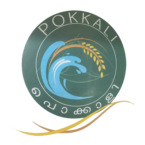Introduction to Pokkali
Pokkali rice is a centuries-old indigenous rice variety with over 3,000 years of cultivation history. It is predominantly grown in the coastal saline wetlands of Kerala, spanning the districts of Ernakulam, Thrissur, and Alappuzha. Renowned for its exceptional resilience, Pokkali rice is a symbol of Kerala’s rich agricultural heritage. This unique rice variety is cultivated organically, showcasing an eco-friendly farming system rooted in traditional practices.
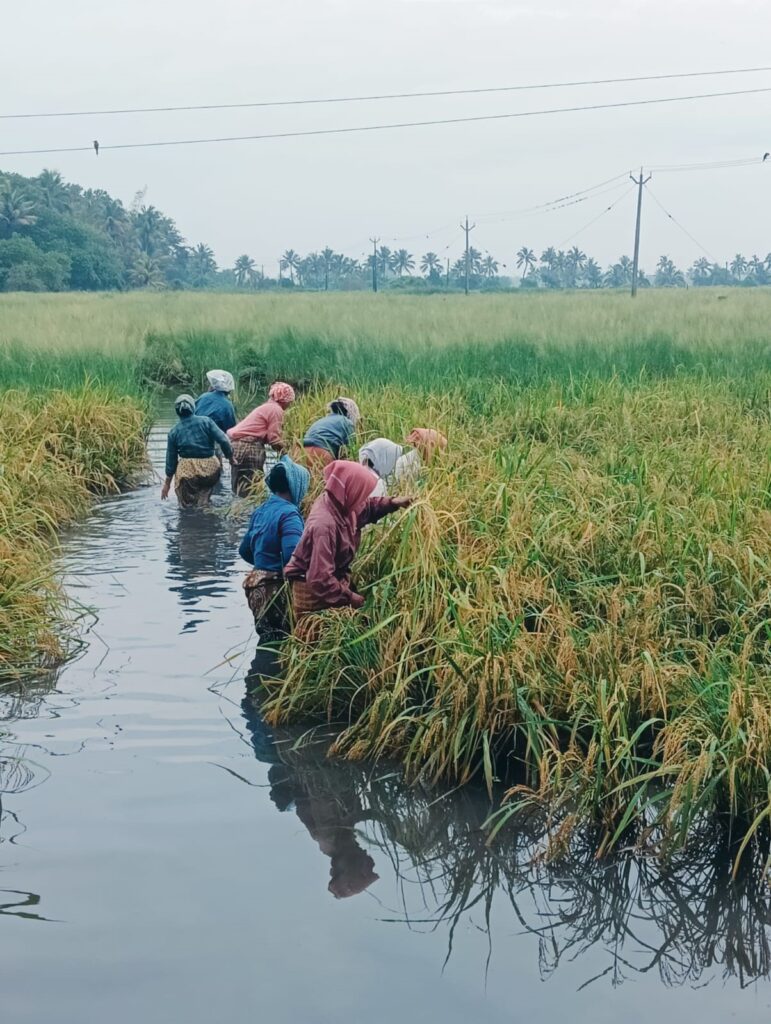
The Unique Ecosystem
Pokkali farming exemplifies a symbiotic relationship between rice cultivation and prawn aquaculture. Farmers cultivate rice during the low-salinity monsoon period (June to October), followed by prawn farming during the high-salinity dry season (November to May). This mutually supportive system utilizes prawn excreta as natural manure for rice, while the leftover paddy stalks serve as fodder for prawns. This harmonious farming cycle sustains agriculture and aquaculture, creating a productive ecosystem.
The History
The story of Pokkali begins with a great flood that carried the seeds of this remarkable grain from the highlands of the Western Ghats to the low-lying saline plains of Kerala. Over time, this resilient crop evolved into a formidable survivor, adapting to harsh environmental conditions to sustain the communities that embraced its cultivation. Pokkali is one of the oldest rice varieties in Kerala and among the earliest crops to be cultivated through organic farming practices worldwide.
Some believe that the Konkani-speaking Kudumbi community may have introduced this grain when they migrated from present-day Goa to Kerala. Interestingly, Pokkali rice is also grown in Sri Lanka, raising the possibility that it traveled with Buddhist missionaries or vice versa. The history of Pokkali is deeply intertwined with the migrations and cultural exchanges of the communities connected to Kerala. There are undoubtedly more stories waiting to be uncovered about this extraordinary grain.In Malayalam, the word “Pokkali” translates to “the one who grows above all,” a fitting name for a rice plant that can reach towering heights of up to six feet. Its slender yet resilient structure reflects its ability to thrive in challenging conditions, making it a true symbol of strength and adaptability
Pokkali farming alternates between rice cultivation and aquaculture, a practice deeply rooted in the coastal districts of Ernakulam, Thrissur, and Alappuzha. This farming system not only exemplifies ecological harmony but also underscores the cultural heritage and enduring legacy of Pokkali rice. This crop continues to nourish, heal, and inspire through the ages.
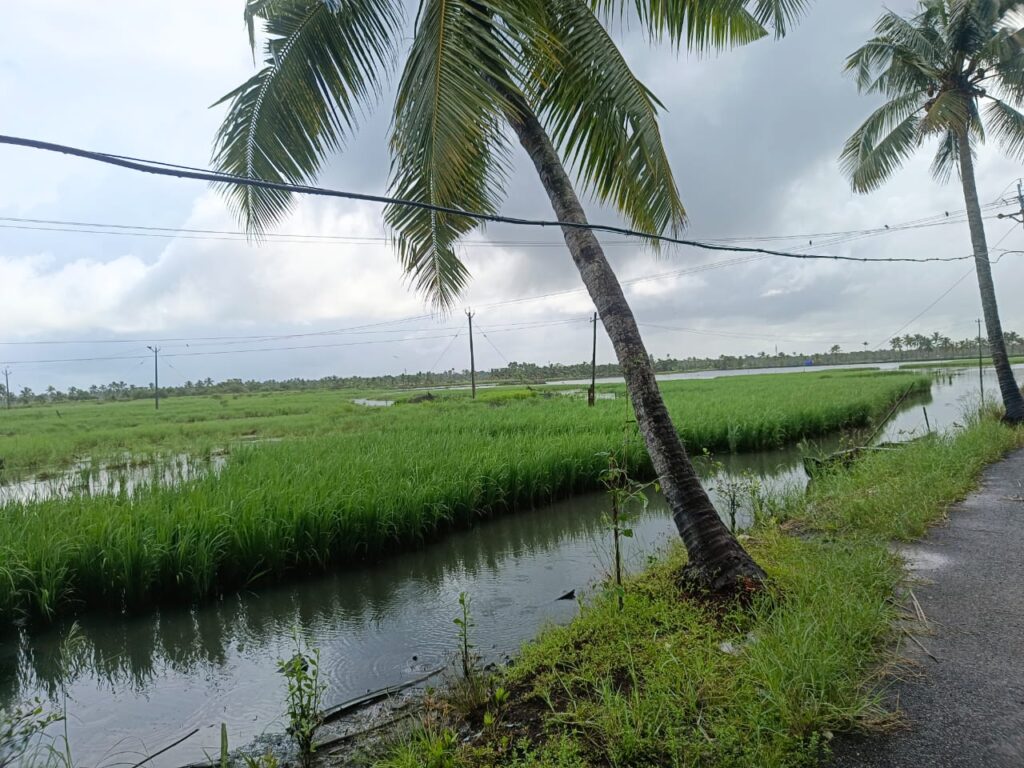
Farming Practices

Rice cultivation occurs during the low salinity phase, generally from May-June to September-October. In contrast, aquaculture is carried out during the high salinity phase, typically from December to January.
Soil mounds are prepared by mid-April and sluices (wooden gates) are repaired to regulate the water levels in the fields. The sluices control water flow during tidal changes, which is crucial for both rice cultivation and prawn farming. By mid-April, the soil mounds are dried and after April 14, sluices (water gates) are installed in the field to regulate water flow during tidal changes. Water channels and dikes are made followed by ploughing. The field is suitable for sowing once the monsoon has removed salt from the soil. The mounds act as elevated nursery beds, protecting the seedlings from flash floods.
A special method is adopted for sprouting the seeds. The seeds are tightly packed in baskets made of plaited coconut leaves, the inside of which is lined by banana or teak leaves. These baskets are then immersed in freshwater ponds for 12 to 15 hours. They are then taken out and stored in the shade. The radicle just sprouts and remains quiescent under this condition for more than 30 days. When the soil and weather conditions become favourable for sowing, the baskets containing the seeds are re-soaked for 3 to 6 hours before sowing. The mounds in the field are then raked and top-leveled. The sprouted seeds are sown on mounds, which act as an in situ nursery. When the seedlings reach a height of 40-45 cm (in 30-35 days), the mounds are cut into pieces with a few seedlings, which are uniformly spread in the field.
Manuring and Nutrient Management
Generally manuring or plant protection operations are not necessary for Pokkali farming systems. The crop matures in a trout for 12 days. After the rice harvest, the field is used for prawn capture, which provides a substantial subsidiary income to the farmer. In Pokkali cultivation where no chemical fertilizers are added. The annual transition from low saline to high saline phase is such that the stenohaline fauna and flora die out, decompose, and add to soil fertility. Forest areas were habituated centuries ago and have undergone decomposition and increased soil fertility. Moulting waste secreted by prawns and fishes aid in fertility.
Harvesting
Harvesting is done after 120 days of sowing. Harvesting takes place in October. Only the panicles are cut about 30 cm from the top and the rest of the stalks are left to decay in the water, which in time become feed for the prawns that start arriving in November-December. Then, the second phase of the Pokkali farming, the prawn filtration, begins. The rice matures in about 100 days, with the grains ripening into a golden color ready for harvest after 120 days. Harvesting is carried out by hand, often by women, who stand knee-deep in marshy fields.
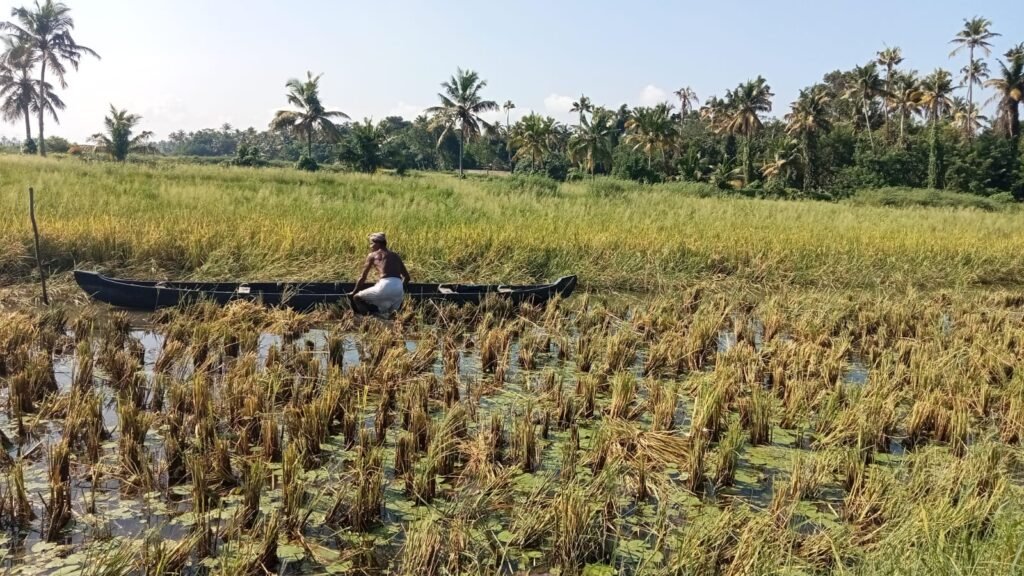

Pokkali Prawn culture
Pokkali prawn culture is an integral part of the traditional Pokkali farming system practiced in the coastal regions of Kerala. Following the rice harvest, the fields are prepared for aquaculture during the high salinity phase of the tidal cycle. Farmers obtain a “filtration license” from the Kerala State Fisheries Department to use public water bodies for aquaculture. Saline water is allowed into the fields through carefully regulated sluices, and naturally available prawn larvae, such as species like Metapenaeus dobsoni, Penaeus indicus, and Penaeus monodon, are introduced into the shallow waters. Farmers use a conical-shaped prawn filtration net to trap and nurture the larvae, while bamboo screens are installed to prevent prawns from escaping. The prawns thrive in nutrient-rich fields, enriched by the organic residue left from rice cultivation. This rotational system not only provides an additional source of income but also enhances soil fertility, making it a sustainable practice. With proper care and water level management, the system yields 3 to 5 tons of prawns per hectare while supporting the ecological balance of the wetland ecosystem.
Significance of Pokkali Rice

Resilience to Salinity and Flooding :
Thrives in saline conditions and can withstandsubmergence for over a week, making it a climate-resilient crop.

Eco-friendly Farming System:
Integrated Pokkali-Prawn farming supports sustainable,organic agriculture by combining rice cultivation with prawn farming, conserving biodiversity

Geographical Indication (GI) Tag:
Received the GI tag in 2008–2009, safeguarding its authenticity and providing economic benefits to farmers.

Genetic Contribution:
Pokkali serves as a valuable donor variety in international breeding programs, contributing genes for salt tolerance and submergence resistance. Research at the University of Arizona and Okayama University has demonstrated Pokkali’s genetic significance. Notably, Okayama University identified the duplication of the OsNramp5 gene in Pokkali, which minimizes cadmium accumulation in rice grains without affecting yield or quality. This discovery enhances food safety and reinforces Pokkali’s role in addressing global agricultural challenges.

Economic and Cultural Value:
Pokkali farming sustains the livelihoods of coastal farming communities and preserves age-old agricultural traditions. Its high nutritional value and organic cultivation methods position it as a premium product in both domestic and international markets, providing economic upliftment and enhancing cultural identity.

Sustainability:
The Pokkali farming system aligns effectively with sustainable development goals by fostering environmentally friendly practices, minimizing carbon emissions, and supporting climate adaptation. As a resilient and sustainable crop, Pokkali plays a vital role in addressing food insecurity in saline-affected regions worldwide. This traditional farming method enhances climate resilience by sequestering carbon and lowering methane emissions. With rising sea levels endangering coastal wetlands, Pokkali’s integration of
agriculture and aquaculture offers a sustainable solution for protecting these ecosystems while ensuring livelihoods.
Need for Pokkali Farming

Wetland Conservation
Protects Kerala’s wetlands, which act as natural sponges for flood
control, water purification, and biodiversity conservation

Avifauna Habitat
Preserves habitats for migratory birds and supports the wetland
ecosystem as an Important Bird Area (IBA).
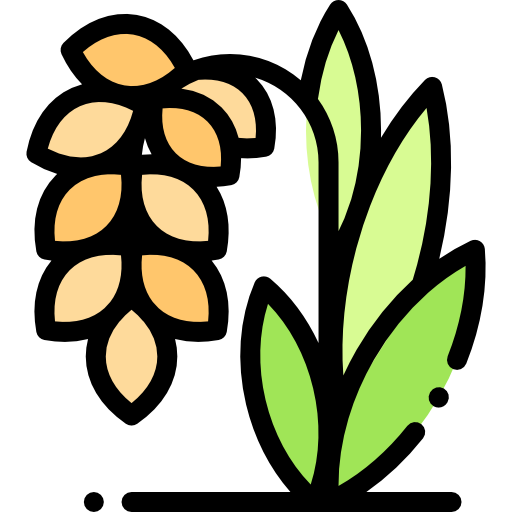
Boosting Rice Production
Promotes organic rice production in stress-prone areas to meet
demand and contribute to sustainable agriculture.

Climate Adaptation
Enhances climate resilience by sequestering carbon, reducing methane
emissions, and supporting sustainable livelihoods in coastal regions.

Organic Farming Revolution
Supports the shift to organic farming practices, fostering an
evergreen revolution in rice cultivation.
